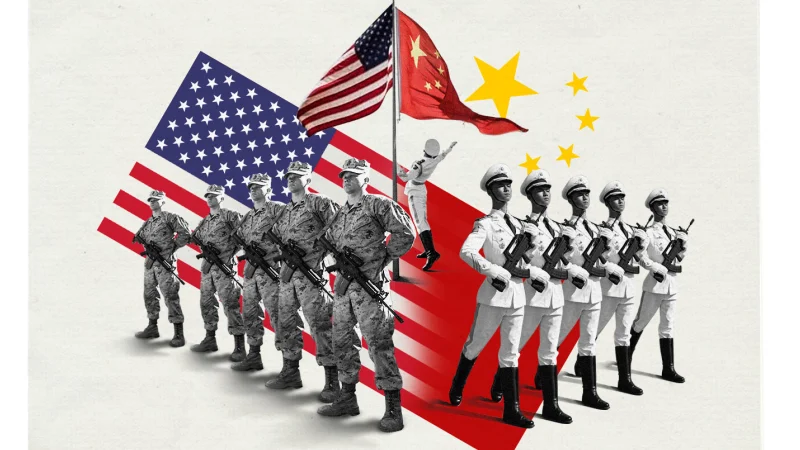The dispute between the US and China has intensified in recent years. The rivalry between the two largest economies in the world has been increasingly evident, from trade war to military disputes. The case of the balloons revealed in the last few days demonstrates that China-US espionage has reached the highest level ever.
(RFI) The United States has a significantly larger military force than China, but experts believe that the Asian country is rapidly catching up or surpassing the United States in terms of military technology.
The next steps in the U.S.-China dispute depend on the intentions of both sides. The United States seems to be focused on maintaining its military supremacy in the Pacific, while China seeks to expand its regional and global influence. The U.S. government has been putting pressure on its allies not to do business with China, while Beijing continues to invest in military infrastructure and technology to strengthen its presence in the region.
In addition, the United States is also working to contain China’s advance in the telecommunications sector by imposing restrictions on Chinese companies such as Huawei and ZTE. On the other hand, China has sought to strengthen its military presence in the Indo-Pacific region by building military bases on artificial islands and holding frequent military exercises near Taiwan.
In the near future, we are likely to see a direct confrontation between the two countries over important regional issues such as Taiwan and the South China Sea. It is possible that the United States will try to block or limit China’s advance in these areas through trade or diplomatic sanctions. However, any direct military escalation could have catastrophic consequences for all involved.
Espionage
The latest developments in China-US espionage highlight the intensifying rivalry between the two countries. With both sides accused of using advanced technologies to conduct cyber and physical espionage, this ongoing battle for hegemony has taken on a new dimension. The United States and China are now engaged in an ever-increasing arms race as each side tries to gain an edge over the other.
This has led both countries to step up their efforts in areas such as technology, surveillance, and human intelligence gathering. In addition, there have been reports of attempts by China to steal intellectual property from American companies and universities. The growing hostility between the two nations is further evidenced by rising tensions over trade agreements and military activities in the South China Sea. It remains to be seen whether diplomatic talks and negotiations can lead to a resolution of this conflict quickly, or whether tensions will continue to rise in the future.
Regardless of the outcome, it is clear that espionage between the two countries has reached an all-time high. As both sides seek to gain an advantage over the other, espionage between the two countries is likely to remain a prominent feature of this ongoing rivalry.
Legality of air operations questioned
The incident of the US shooting down a Chinese spy balloon has raised many questions about international relations and security issues. Many have argued that it shows the willingness of the US to take military action to protect its own interests, while others have questioned whether or not such an extreme measure was justified under the circumstances.
There are also questions about the legality of such actions, as international law is often murky when it comes to military activity on foreign soil or airspace. As tensions between the U.S. and China continue to rise, it will be important to closely monitor the situation and consider all possible outcomes before taking any further action.
The worst case scenario in U.S.-China tensions would involve a full-scale military conflict. The two countries have differing views on a range of issues, from trade to human rights and the South China Sea dispute. If these disagreements escalate, it could lead to a major confrontation between the two sides.
Such a conflict could begin with Washington imposing sanctions on Chinese companies or individuals, leading to retaliatory measures by Beijing. This could trigger a trade war, with other countries potentially getting involved in the fight. In extreme cases, it could even lead to an all-out military conflict involving ground troops and air strikes.
The consequences of such a conflict would be far-reaching and could have devastating effects on the global economy. The economic costs of a large-scale military conflict between the two competitors would be immense, with entire industries being affected and significant job losses in both countries. There is also the potential for long-term political instability in various parts of the world, as well as the environmental damage caused by the conflict itself.
Room for diplomatic evolution?
Therefore, it is essential that both sides take steps to lower tensions and prevent a worst-case scenario from occurring. This will require dialogue, diplomacy and compromise in order to resolve the differences at issue. It is also important that other countries become involved in these talks and act as mediators between the two sides.
Ultimately, a peaceful resolution is the only way to ensure that the U.S. and China can continue to have strong relations in the future.
US is not putting balloons up to fly over China, says White House
The United States is not launching balloons over China, White House National Security spokesman John Kirby said Monday, denying allegations by Chinese officials.
“It’s not true. We are not doing that. It’s simply not true,” he said in an interview with MSNBC. “We are not putting balloons up to fly over China.”
*** Translated by the DEFCONPress FYI team ***
